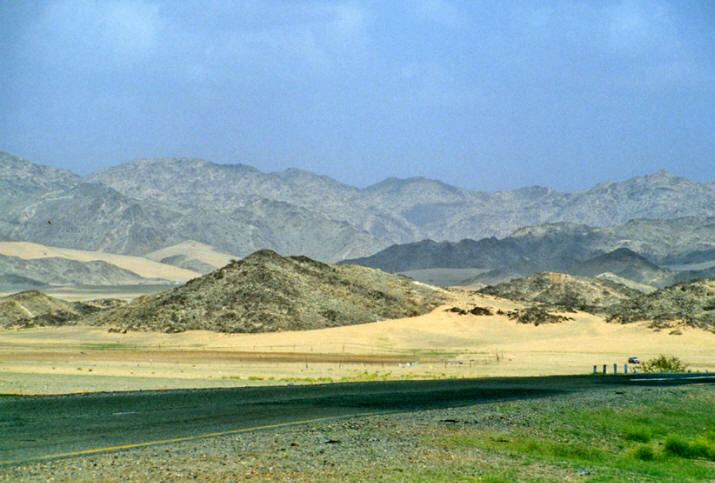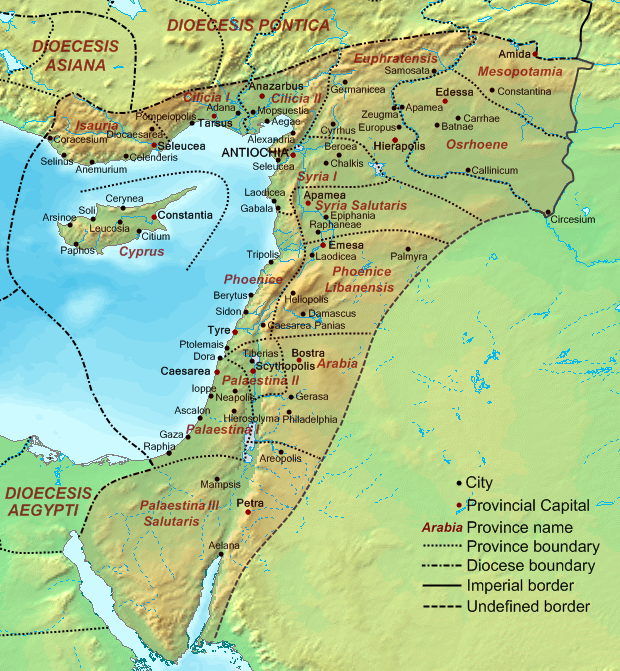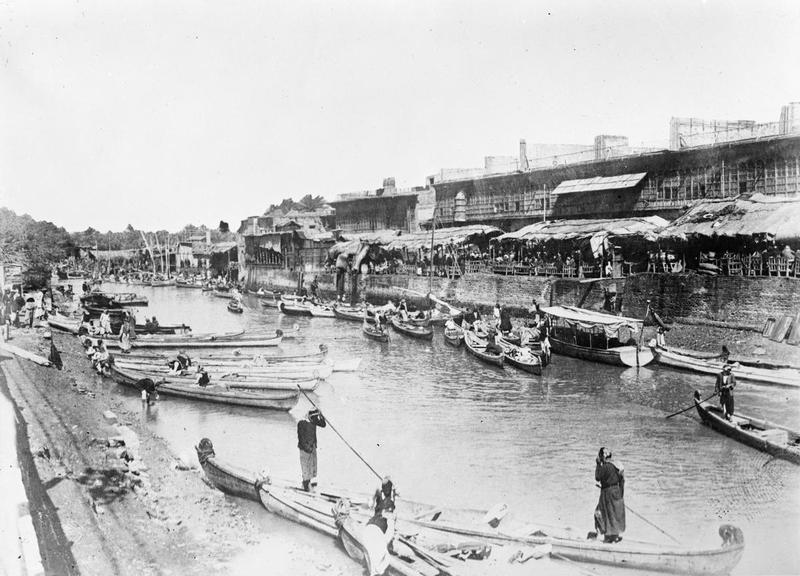|
Al-mughira Ibn Shu'ba
Abu Abd Allah al-Mughira ibn Shu'ba ibn Abi Amir ibn Mas'ud al-Thaqafi (); –671), was a prominent companion of the Islamic prophet Muhammad and was known as one of the four 'shrewds of the Arabs' (''duhat al-Arab''). He belonged to the tribe of Thaqif of Ta'if, who were part of the early Islamic elite. He served as governor of Kufa, one of the two principal Arab garrisons and administrative centers of Iraq, under Caliph Umar in 642–645. In his old age, al-Mughira was again made governor of Kufa, serving under the Umayyad caliph Mu'awiya I from 661 until his death in 671. During his second governorship, he ruled with virtual independence from the caliph. Life Early life Al-Mughira was the son of Shu'ba ibn Abi Amir and belonged to the Banu Mu'attib clan of the Banu Thaqif tribe of Ta'if.Lammens 1993, p. 347. His clan were the traditional protectors of the shrine of al-Lat, one of many Arabian polytheistic deities worshiped in the pre-Islamic period. His uncle was Urwah ... [...More Info...] [...Related Items...] OR: [Wikipedia] [Google] [Baidu] |
Ta'if
Taif (, ) is a city and governorate in Mecca Province in Saudi Arabia. Located at an elevation of in the slopes of the Hijaz Mountains, which themselves are part of the Sarawat Mountains, Sarat Mountains, the city has a population of 563,282 people in 2022, making it one of the most populous cities in the kingdom. There is a belief that Taif is indirectly referred to in Quran 43:31. The city Muhammad's visit to Ta'if, was visited by the Islamic Prophets and messengers in Islam, prophet Muhammad, sometime in the early 7th century, and was inhabited by the tribe of Banu Thaqif. It is still inhabited to this day by their descendants. As a part of the Hejaz, the city has seen many transfers-of-power throughout its history, with the last being during the Saudi conquest of Hejaz in 1925. The city has been called the unofficial summer capital of Saudi Arabia and has also been called the best summer destination in Saudi Arabia as it enjoys a moderate weather during summer, unlike most ... [...More Info...] [...Related Items...] OR: [Wikipedia] [Google] [Baidu] |
Islam
Islam is an Abrahamic religions, Abrahamic monotheistic religion based on the Quran, and the teachings of Muhammad. Adherents of Islam are called Muslims, who are estimated to number Islam by country, 2 billion worldwide and are the world's Major religious groups, second-largest religious population after Christians. Muslims believe that Islam is the complete and universal version of a Fitra, primordial faith that was revealed many times through earlier Prophets and messengers in Islam, prophets and messengers, including Adam in Islam, Adam, Noah in Islam, Noah, Abraham in Islam, Abraham, Moses in Islam, Moses, and Jesus in Islam, Jesus. Muslims consider the Quran to be the verbatim word of God in Islam, God and the unaltered, final revelation. Alongside the Quran, Muslims also believe in previous Islamic holy books, revelations, such as the Torah in Islam, Tawrat (the Torah), the Zabur (Psalms), and the Gospel in Islam, Injil (Gospel). They believe that Muhammad in Islam ... [...More Info...] [...Related Items...] OR: [Wikipedia] [Google] [Baidu] |
Bilad Al-Sham
Bilad al-Sham (), often referred to as Islamic Syria or simply Syria in English-language sources, was a province of the Rashidun, Umayyad, Abbasid, and Fatimid caliphates. It roughly corresponded with the Byzantine Diocese of the East, conquered by the Muslims in 634–647. Under the Umayyads (661–750), Bilad al-Sham was the metropolitan province of the Caliphate and different localities throughout the province served as the seats of the Umayyad caliphs and princes. Bilad al-Sham was first organized into the four '' ajnad'' (military districts; singular ''jund'') of Dimashq (Damascus), Hims (Homs), al-Urdunn (Jordan), and Filastin (Palestine), between 637 and 640 by Caliph Umar following the Muslim conquest. The ''jund'' of Qinnasrin was created out of the northern part of Hims by caliphs Mu'awiya I () or Yazid I (). The Jazira (Upper Mesopotamia) was made an independent province from the Mesopotamian part of Qinnasrin by Caliph Abd al-Malik in 692. In 786, the ''j ... [...More Info...] [...Related Items...] OR: [Wikipedia] [Google] [Baidu] |
First Fitna
The First Fitna () was the first civil war in the Islamic community. It led to the overthrow of the Rashidun and the establishment of the Umayyad Caliphate. The civil war involved three main battles between the fourth Rashidun caliph, Ali, and the rebel groups, primarily led by Mu'awiya and Aisha. The roots of the first civil war can be traced back to the assassination of the second caliph, Umar. Before he died from his wounds, Umar formed a six-member council which elected Uthman as the next caliph. During the final years of Uthman's caliphate, he was accused of nepotism and killed by rebels in 656. After Uthman's assassination, Ali was elected the fourth caliph. Aisha, Talha, and Zubayr revolted against Ali to depose him. The two parties fought the Battle of the Camel in December 656, from which Ali emerged victorious. Afterward, Mu'awiya, the incumbent governor of Syria, declared war on Ali, ostensibly to avenge Uthman's death. The two parties fought the Battl ... [...More Info...] [...Related Items...] OR: [Wikipedia] [Google] [Baidu] |
Uthman
Uthman ibn Affan (17 June 656) was the third caliph of the Rashidun Caliphate, ruling from 644 until his assassination in 656. Uthman, a second cousin, son-in-law, and notable companion of the Islamic Prophet Muhammad, played a major role in early Islamic history. During his reign as caliph, he was known for ordering the official compilation of the standardized version of the Quran, known as Uthman's Quran, that is still being used today. Before his predecessor, Caliph Umar (), died in office, he appointed a committee of trustees to elect a successor. Uthman, who was then aged 68–71 years, was elected to succeed him and became the oldest person to hold such a high position. During his premiership, the Caliphate expanded further into Persia in 650 and reached as far as the provinces of Khorasan in 651. Uthman instituted centralized reforms in order to create a more cohesive administrative structure and fostered rapid economic growth. However, the last years of his re ... [...More Info...] [...Related Items...] OR: [Wikipedia] [Google] [Baidu] |
Abu Lu'lu'a
(, from Middle Persian: ''Pērōz''), also known in modern Persian-language sources as () or (), was a Sasanian Persian slave who assassinated Umar ibn al-Khattab (), the second Islamic caliph, in November 644. After having been captured in battle during the Arab-Muslim conquest of Persia, Abu Lu'lu'a was brought to Medina, the then-capital of the Rashidun Caliphate, which was normally off-limits to non-Arab captives. However, as a highly skilled craftsman, Abu Lu'lu'a was exceptionally allowed entrance into the city in order to work for the caliph. His motive for killing the caliph is not entirely clear, but medieval sources generally attribute it to a tax dispute. At one point, Abu Lu'lu'a is said to have asked the caliph to lift a tax imposed upon him by his Arab master, al-Mughira ibn Shu'ba. When Umar refused to lift the tax, Abu Lu'lu'a attacked him while he was leading the congregational prayer in the mosque, stabbing him with a double-bladed dagger and leaving hi ... [...More Info...] [...Related Items...] OR: [Wikipedia] [Google] [Baidu] |
Muslim Conquest Of Persia
As part of the early Muslim conquests, which were initiated by Muhammad in 622, the Rashidun Caliphate conquered the Sasanian Empire between 632 and 654. This event led to the decline of Zoroastrianism, which had been the official religion of Name of Iran, Persia (or Iran) since the time of the Achaemenid Empire. The persecution of Zoroastrians by the early Muslims during and after this conflict prompted many of them to flee eastward to Indian subcontinent, India, where they were Zoroastrianism in India, granted refuge by various kings. While Pre-Islamic Arabia, Arabia was experiencing the rise of Islam in the 7th century, Persia was struggling with unprecedented levels of political, social, economic, and military weakness; the Military of the Sasanian Empire, Sasanian army had greatly exhausted itself in the Byzantine–Sasanian War of 602–628. Following the execution of Sasanian shah Khosrow II in 628, Persia's internal political stability began deteriorating at a rapid pa ... [...More Info...] [...Related Items...] OR: [Wikipedia] [Google] [Baidu] |
Basra
Basra () is a port city in Iraq, southern Iraq. It is the capital of the eponymous Basra Governorate, as well as the List of largest cities of Iraq, third largest city in Iraq overall, behind Baghdad and Mosul. Located near the Iran–Iraq border at the north-easternmost extent of the Arabian Peninsula, the city is situated along the banks of the Shatt al-Arab that empties into the Persian Gulf. It is consistently one of the hottest cities in Iraq, with summer temperatures regularly exceeding . Built in 636 as a military camp, Basra played an important role as a regional hub of knowledge, trade and commerce during the Islamic Golden Age and is home to the first mosque built outside the Arabian Peninsula. It was a center of the History of slavery, slave trade in Mesopotamia, until the Zanj Rebellion, Zanj rebellion in Battle of Basra (871), 871. Historically, Basra is one of the ports from which the fictional Sinbad the Sailor embarked on his journeys. It has experienced numerou ... [...More Info...] [...Related Items...] OR: [Wikipedia] [Google] [Baidu] |
Battle Of Yarmouk
The Battle of the Yarmuk (also spelled Yarmouk; ) was a major battle between the army of the Byzantine Empire and the Arab Muslim forces of the Rashidun Caliphate. The battle consisted of a series of engagements that lasted for six days in August 636, near the Yarmouk River (also called the Hieromyces River), along what are now the borders of Syria–Jordan and Syria-Israel, southeast of the Sea of Galilee. The result of the battle was a decisive Muslim victory that ended Roman rule in Syria after about seven centuries. The Battle of the Yarmuk is regarded as one of the most decisive battles in military history,. and it marked the first great wave of early Muslim conquests after the death of the Islamic prophet Muhammad, heralding the rapid advance of Islam into the then-Christian/Roman Levant. To check the Arab advance and to recover lost territory, Emperor Heraclius had sent a massive expedition to the Levant in May 636. As the Byzantine army approached, the Arabs tactica ... [...More Info...] [...Related Items...] OR: [Wikipedia] [Google] [Baidu] |
Abu Bakr
Abd Allah ibn Abi Quhafa (23 August 634), better known by his ''Kunya (Arabic), kunya'' Abu Bakr, was a senior Sahaba, companion, the closest friend, and father-in-law of Muhammad. He served as the first caliph of the Rashidun Caliphate, ruling from 632 until his death in 634. Abu Bakr was granted the honorific title ''al-Ṣiddīq'' (lit. the Veracious) by Muhammad, a designation that continues to be used by Sunni Muslims to this day. Born to Abu Quhafa and Umm al-Khayr of the Banu Taym, Abu Bakr was amongst the Early Muslims, earliest converts to Islam and propagated dawah to the Mushrikites. He was considered the first Da'i, Muslim missionary as several companions of the Prophet, companions of Muhammad converted through Abu Bakr. He accompanied Muhammad on his Hegira, migration to Medina and became one of his Haras (unit), bodyguards. Abu Bakr participated in all of List of expeditions of Muhammad, Muhammad's campaigns and served as the first in 631. In the absence of Muha ... [...More Info...] [...Related Items...] OR: [Wikipedia] [Google] [Baidu] |
Treaty Of Hudaybiyyah
The Treaty of al-Hudaybiya () was an event that took place during the lifetime of the Islamic prophet Muhammad. It was a pivotal treaty between Muhammad, representing the state of Medina, and the tribe of the Quraysh in Mecca in March 628 (corresponding to Dhu al-Qi'dah, AH 6). The treaty helped to decrease tension between the two cities, affirmed peace for a period of 10 years, and authorised Muhammad's followers to return the following year in a peaceful pilgrimage, which was later known as the First Pilgrimage. However this treaty was broken in two years. According to Islamic sources, the treaty was broken by the Quraysh, which led Muhammad to march against Mecca in 630 with an army of 10,000 men. Background As a result of the rejection of his message and the persecution of his followers, the Islamic prophet Muhammad left his hometown of Mecca in 622 and migrated with his followers to the oasis town of Medina. There, he had more followers and founded a local power base. ... [...More Info...] [...Related Items...] OR: [Wikipedia] [Google] [Baidu] |







